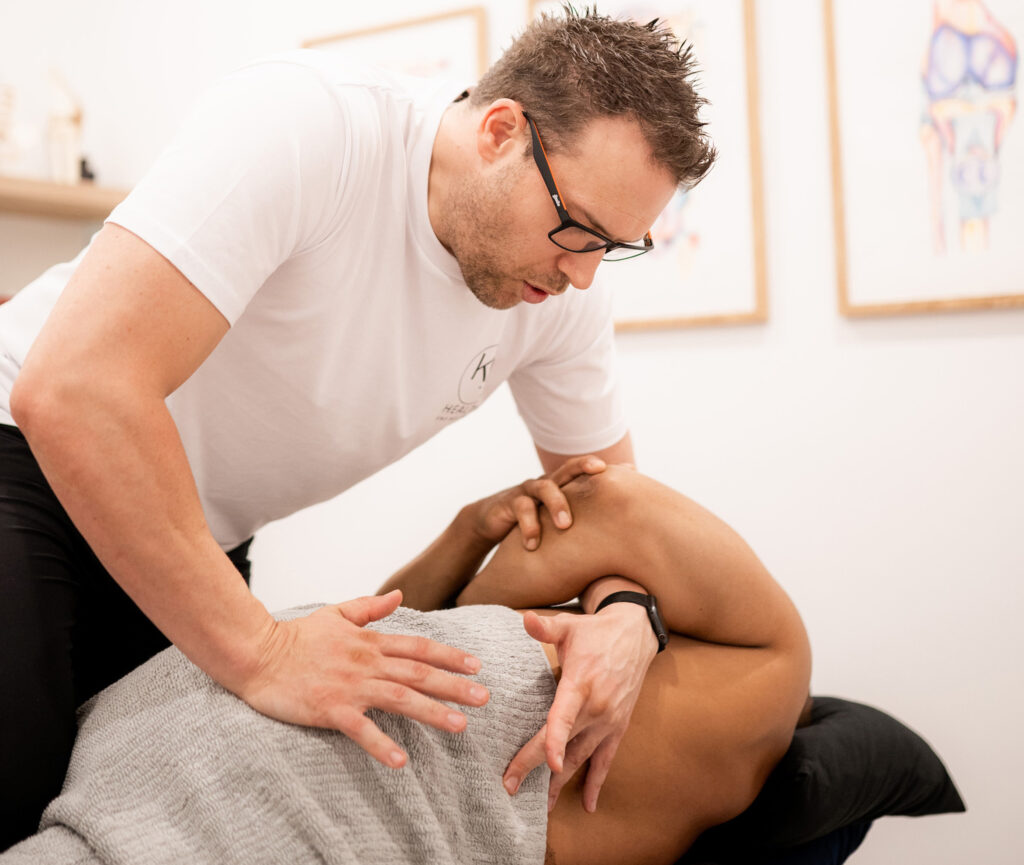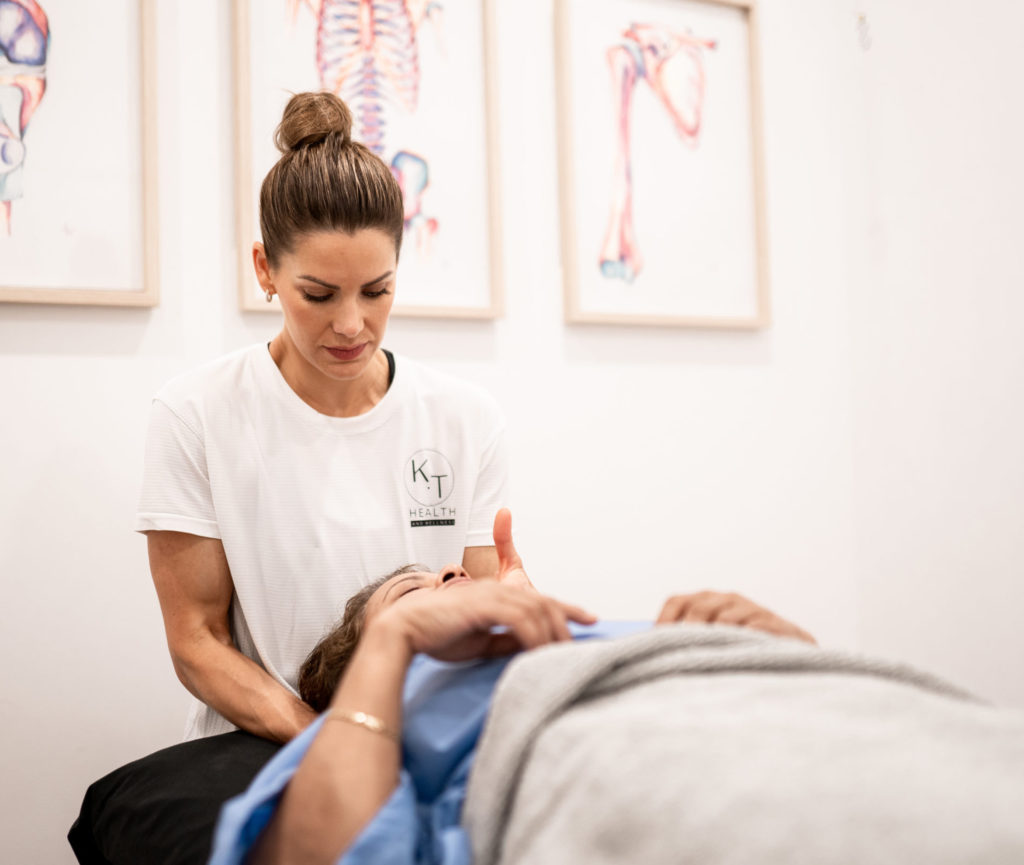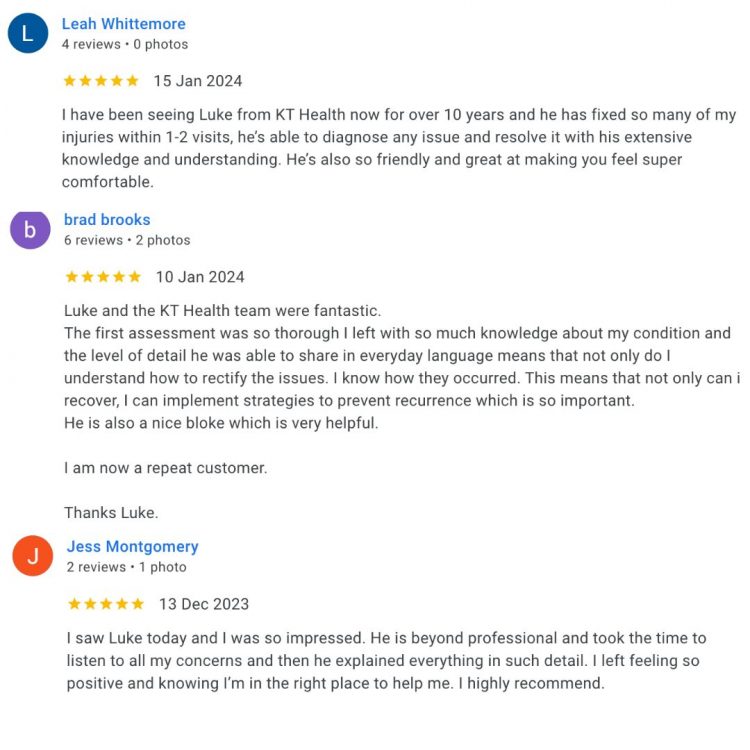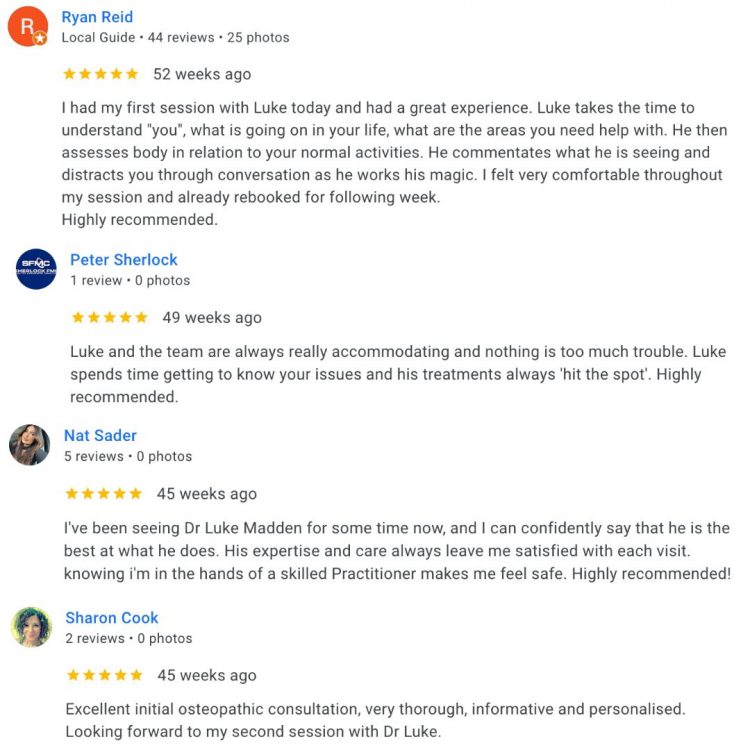Everything You Need to Know About Adductor Tendonitis
What is Adductor Tendonitis?
Adductor tendonitis is when the tendon that connects the adductor muscles (inner thigh muscles) to the pelvis becomes inflamed or irritated. It usually happens from overuse or sudden overload, especially in sports involving sprinting, kicking, or changing direction, and causes pain in the groin or inner thigh.
An analogy…
Think of the adductor tendon like a rope attaching your inner thigh muscles to your pelvis. If that rope gets pulled or strained too much without enough recovery, it becomes frayed and inflamed, that’s adductor tendonitis.
What are other names that adductor tendonitis can be called?
Adductor Tendinopathy, Adductor Tendinitis, Adductor Tendinosis, Groin Tendonitis, Groin Tendinopathy, Groin Tendinitis, Groin Tendinosis
What causes adductor tendonitis?
The adductors are a group of muscles that pull your legs toward the midline (like squeezing your knees together). Their tendons attach to the pubic bone at the front of the pelvis. Repetitive stress, tightness, weakness, or sudden overload can cause micro-tears and inflammation where the tendon attaches, leading to groin pain and stiffness.
What are the signs and symptoms of adductor tendonitis?
- Pain or tenderness in the groin or upper inner thigh
- Pain that worsens with activities like sprinting, cutting, kicking, or lunging
- Tenderness at the adductor origin near the pubic bone
- Tightness or pulling sensation along the inner thigh
- Pain when squeezing the legs together
- Stiffness or aching, especially after rest or intense activity
What tests are used to diagnose adductor tendonitis?
Palpation: Pressing over the pubic bone and adductor tendons reproduces pain
Resisted adduction test: Asking the patient to squeeze their legs together against resistance; pain confirms tendon involvement
How long does adductor tendonitis take to heal?
Mild cases often improve in 2 to 4 weeks with rest and rehab. Moderate cases can take 6 to 8 weeks to fully heal. Chronic tendonitis (lasting months) may take 3 to 6 months to fully resolve with a structured rehab plan.
How does adductor tendonitis happen?
- Sudden increase in running or kicking activities
- Poor hip or core strength leading to overload on the adductors
- Tight adductors or hip flexors limiting movement
- Poor warm-up routines before activity
- Muscle imbalances between the glutes, core, and inner thigh muscles
- Prolonged sitting with poor hip mobility
What treatment can help adductor tendonitis?
- Rest from aggravating activities
- Ice application in the early stages
- Manual therapy (massage, dry needling, or soft tissue release)
- Progressive strengthening
- Stretching the hip and adductor muscles carefully
- Postural and movement correction for running, kicking, or lifting
What exercises or stretches can I do for adductor tendonitis?
- Isometric adductor squeezes
- Side-lying hip adduction exercises
- Glute and core strengthening
- Gentle adductor and hip flexor stretches
- Movement retraining for sprinting, cutting, or kicking mechanics
What products can help with adductor tendonitis?
Active hip adduction in side lying
Lie on your side with the leg to be exercised lowest.
Ensure your upper body is in a comfortable position.
Bend your upper leg and place the foot on the floor in front of your lower knee.
Keeping your body stable, raise your lower leg up off the floor.
Ensure you keep the leg straight.
Control the movement as you lower it back down and repeat.

Active SLR (VMO)
Lie on your back with your affected leg straight and the other leg bent for stability.
Turn the affected leg out, tighten the thigh muscles to fully straighten the knee and lift the leg off the bed, keeping the knee completely straight.
Hold this position, ensuring the leg is still turned out.
Control the movement as you lower the leg back down, and allow it to roll back in to the neutral position.

Single-leg squat
Stand near a wall or table for support if you need it.
Balance on your affected leg.
Keeping the heel on the ground, bend your knee, ensuring the knee travels directly forwards over your toes.
Straighten back up fully, and repeat the movement.

STOP GUESSING – START MOVING
See what other people have said about our osteopaths
Trustindex verifies that the original source of the review is Google. KT health has really helped my back and i have been able to get back into competitive sportTrustindex verifies that the original source of the review is Google. Absolutely amazing, I see Louie Nouh who always listens and caters to my needs. He is amazing at his job and always helps alleviate my pain. I highly recommend Louie.Trustindex verifies that the original source of the review is Google. Friendly, supportive staff. Such a lovely place to exercise! Highly recommend.Trustindex verifies that the original source of the review is Google. Amazing instructor, I am new to Pilates felt very comfortable & supported.Trustindex verifies that the original source of the review is Google. I have been suffering from shoulder and neck pain for months - I saw Dr Louie Nouh a couple of time. His treatment really relived the pain. I have full range of movement now. His knowledge on exercise is fantastic.Trustindex verifies that the original source of the review is Google. Absolutely love reformer at menai. Instructors are amazing. Love Michaela and love the small classes. Highly recommend!Trustindex verifies that the original source of the review is Google. The trainers are all amazing , they explain everthing step by step and help where needed . It is an amazing place to relax get to know other people have a laugh . I recommend for anyone .Trustindex verifies that the original source of the review is Google. Ever since I came here I’ve been looked after by Louie and my shoulder is already feeling much better. Highly Recommend these are good people.Trustindex verifies that the original source of the review is Google. SENSATIONAL Chiropractor in Menai! I attended my first appointment with Dr Louis Nouh at KT Health & Wellness who is an absolute genius even after one session with him. He explained everything he intended to address about my lower back condition, all in easy to understand, layman’s terms. He said he would call me the next day to follow and see how I was feeling after our session and guess what, he did! During our session, he made me feel relaxed and comfortable especially as it was my first chiropractic appointment EVER! For some reason, I am actually looking forward to my subsequent sessions with him next week. Don’t get me wrong, he did poke, prod and crack me as necessary but the results made it seem worth it.Trustindex verifies that the original source of the review is Google. I have been seeing Melinda now for a couple of months to help with bursitis in my hip. She is one of the best practitioners I’ve ever seen.. With the use of various tools and techniques she has helped me recover much quicker than I expected. Thanks Mel and see you tomorrow!
We don't offer magic fixes or cures, but a sustainable approach to back pain.
Our Osteopaths will offer you a road map to help you take control of your back pain and feel great again.
BOOK YOUR OSTEOPATH VISIT TODAY
Book a Time with Dr Luke Madden Below
Book a Time with Dr Melinda Madden Below
Already have an account?
Book as a guest
- Book an Appointment






